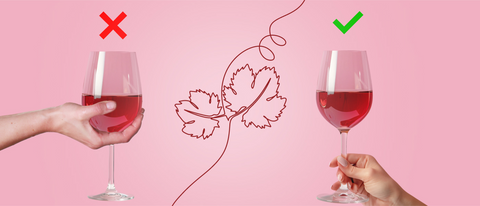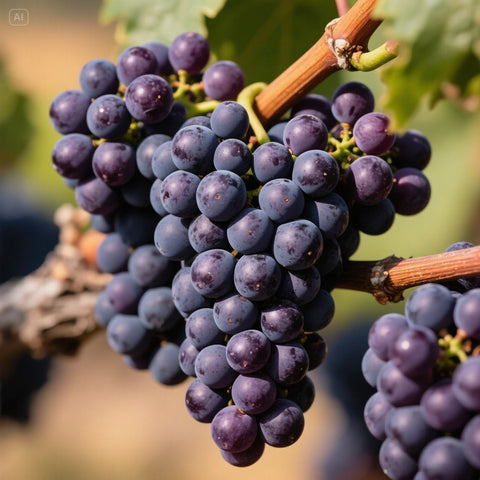Proper wine storage isn't just for collectors with temperature-controlled cellars—it's essential for anyone who wants to enjoy their wines at their best. Whether you're storing a case of McLaren Vale Shiraz for a special occasion or building a collection of aging wines, understanding storage fundamentals ensures every bottle delivers its full potential when you're ready to open it.
Why Proper Storage Matters
Wine is a living, evolving beverage that continues to change after bottling. Poor storage conditions can turn exceptional wines into disappointing experiences, while proper storage preserves and often enhances wine quality.
Common storage problems include:
- Temperature fluctuations causing premature aging or wine deterioration
- Heat exposure creating flat, cooked flavours
- Light damage breaking down compounds that create wine's complexity
- Vibration disturbing sediment and potentially affecting wine development
- Dry conditions causing cork deterioration and oxidation
The Golden Rules of Wine Storage
Successful wine storage follows four fundamental principles: cool, dark, humid, and still. Master these basics, and you'll preserve wine quality regardless of whether you're storing bottles for weeks or decades.
Temperature: The Most Critical Factor
Ideal range: 12-15°C (54-59°F) Acceptable range: 10-18°C (50-64°F)
Temperature consistency matters more than hitting exact numbers. A steady 18°C is better than fluctuating between 12°C and 15°C.
Why temperature matters:
- Too warm accelerates aging and can create cooked flavours
- Too cold can slow development and potentially cause tartrate crystal formation
- Fluctuations cause wine to expand and contract, potentially compromising cork seals
Humidity: Protecting the Cork
Ideal range: 60-70% relative humidity Acceptable range: 55-75% relative humidity
Proper humidity keeps corks moist and flexible, preventing air infiltration that causes premature oxidation.
Signs of humidity problems:
- Dry conditions: Corks shrink, allowing air into bottles
- Excessive humidity: Label deterioration and potential mould growth (though this rarely affects wine quality)
Light: Keep It Dark
Wine should be stored in complete darkness or very low light conditions. Ultraviolet light breaks down organic compounds in wine, creating off-flavours and aromas.
Light sources to avoid:
- Direct sunlight (the worst offender)
- Fluorescent lighting
- LED lights with UV components
- Incandescent bulbs generating heat
Vibration: Keep It Still
Constant vibration can disturb sediment in wine and potentially interfere with the aging process. While occasional movement won't harm wine, consistent vibration should be avoided.
Common vibration sources:
- Refrigerator compressors
- Washing machines and dryers
- Heavy foot traffic areas
- Speakers and sound systems
Storage Solutions for Every Situation
You don't need a purpose-built cellar to store wine properly. Various storage solutions work for different budgets, spaces, and wine quantities.
Wine Refrigerators: The Gold Standard
Wine fridges provide optimal conditions with precise temperature control, appropriate humidity, UV-filtered glass, and vibration-dampening systems.
Single-zone wine fridges maintain one temperature throughout—perfect if you primarily drink one style of wine or plan to consume bottles within a few years.
Dual-zone wine fridges offer separate temperature controls for different sections, allowing you to store whites at serving temperature while aging reds at cellar temperature.
Benefits:
- Precise temperature control
- Appropriate humidity levels
- UV protection
- Compact footprint for homes without cellar space
Considerations:
- Initial investment cost
- Ongoing electricity usage
- Limited capacity compared to traditional cellars
Traditional Cellars and Storage Rooms
If you have basement space or a suitable room, creating a traditional cellar offers maximum storage capacity and can be cost-effective for serious collectors.
Ideal locations:
- Basements (naturally cooler and more stable)
- Interior closets away from exterior walls
- Under staircases
- Spare rooms with climate control
Requirements:
- Insulation to maintain temperature stability
- Climate control system if natural conditions aren't suitable
- Proper ventilation to prevent stagnant air
- Wine racks designed for long-term storage
Budget-Friendly Storage Solutions
Not everyone needs or can afford specialised storage equipment. These practical alternatives work well for shorter-term storage or wines meant for near-term consumption.
The Cool, Dark Closet Method: Choose an interior closet away from heat sources, preferably on the coolest side of your home. Add insulation if necessary and use a small hygrometer to monitor conditions.
Under-Bed Storage: Many bedrooms stay cooler than living areas. Store wine boxes under beds in guest rooms or other rarely-used spaces.
Garage Storage (with caution): Garages can work in mild climates if properly insulated and protected from temperature extremes. Monitor conditions carefully and avoid during hot summers.
Rented Storage: Some companies offer climate-controlled wine storage services—perfect for serious collectors without home storage space.
Bottle Position: Horizontal vs. Vertical
The traditional advice to store bottles horizontally applies primarily to cork-sealed wines. The reasoning: horizontal storage keeps wine in contact with the cork, preventing it from drying out and allowing air infiltration.
When to Store Horizontally
- All cork-sealed wines for storage periods longer than a few months
- Wines you plan to age for years or decades
- Expensive wines where cork failure would be particularly disappointing
When Vertical Storage Is Acceptable
- Screw-cap wines (no cork to keep moist)
- Synthetic cork wines (synthetic materials don't dry out)
- Short-term storage (wines you'll drink within 3-6 months)
- Sparkling wines (traditionalists debate this, but modern closures make position less critical)
Storage by Wine Style
Different wine styles have varying storage requirements and aging potential. Understanding these differences helps you make informed decisions about storage investment and duration.
Red Wines
McLaren Vale's signature reds generally benefit from proper storage conditions and have good aging potential.
Shiraz: Our flagship variety typically improves with 5-15 years of proper storage, developing greater complexity and smoother tannins.
Grenache: Especially old-vine expressions can age gracefully for 8-12 years, evolving from primary fruit to savoury complexity.
Cabernet Sauvignon: Structured examples benefit from 7-15 years of aging, softening tannins while developing secondary characteristics.
GSM Blends: Generally ready to drink upon release but can develop additional complexity over 5-10 years.
White Wines
While many white wines are designed for immediate consumption, certain styles benefit from short-term aging.
Chardonnay: Premium examples, especially those with oak influence, can develop for 3-7 years.
Riesling: Can age beautifully for decades, developing honeyed characteristics while maintaining acidity.
Semillon: Particularly Hunter Valley styles, known for extraordinary aging potential of 10+ years.
Aromatic whites (Fiano, Vermentino): Generally best consumed within 2-4 years to preserve fresh fruit characteristics.
Sparkling Wines
Quality sparkling wines can age well, developing richer, more complex flavours over time.
Traditional method sparklings: Can age for 5-10+ years, developing toasty, brioche-like characteristics.
Sparkling reds: Australia's unique sparkling Shiraz can age like still reds, often improving over 5-10 years.
Fortified Wines
McLaren Vale's heritage includes exceptional fortified wines with remarkable aging potential.
Vintage fortifieds: Can age for decades, developing incredible complexity.
Tawny styles: Already aged before release but can continue evolving in bottle.
Seasonal Storage Considerations
Australia's climate presents unique storage challenges, particularly during summer months when temperatures soar.
Summer Storage Strategies
Monitor temperatures closely during heat waves. Even well-insulated storage areas can be affected by extreme temperatures.
Increase air circulation to prevent hot spots and stagnant air.
Consider temporary solutions like moving wines to the coolest part of your home during extended hot periods.
Avoid storage areas that receive afternoon sun or are adjacent to heat-generating appliances.
Winter Considerations
Heating systems can create dry conditions. Monitor humidity levels and add moisture if necessary.
Avoid storage near heat sources like furnaces, water heaters, or heating vents.
Insulation matters more when heating systems create larger temperature differentials.
Signs of Storage Problems
Learning to recognise storage-related wine faults helps you adjust conditions before valuable bottles are compromised.
Visual Indicators
Seepage around the cork: Suggests temperature fluctuations causing expansion and contraction.
Cork protrusion: May indicate excessive heat or pressure changes.
Crystal formation: Not necessarily harmful, but can indicate temperature fluctuations.
Colour changes: Reds becoming brown or whites becoming golden (beyond normal aging progression).
Taste and Smell Indicators
Cooked or stewed flavours: Usually from excessive heat exposure.
Cardboard or wet newspaper aromas: Often indicates cork taint or oxidation.
Vinegar-like acidity: Suggests bacterial contamination, often from poor storage.
Lack of fruit character: May indicate premature aging from poor conditions.
Building Your Wine Storage System
Whether you're starting with a few special bottles or planning a serious collection, thoughtful planning ensures your storage system meets current needs while allowing for future expansion.
Assess Your Needs
Storage duration: Are you storing wines for weeks, years, or decades?
Quantity: How many bottles do you typically have on hand?
Wine types: Do you primarily collect reds, whites, or a mix?
Budget: What can you realistically invest in storage equipment?
Space: What storage locations are available in your home?
Start Small, Think Big
Phase 1: Begin with proper short-term storage for wines you'll drink within 1-2 years.
Phase 2: Invest in temperature-controlled storage if you start collecting age-worthy wines.
Phase 3: Expand capacity as your collection grows and your storage needs become clearer.
Consider Professional Help
For serious collectors or valuable wine investments, professional storage services might be worthwhile:
Climate-controlled facilities with optimal conditions.
Insurance coverage for stored wines.
Professional inventory management and retrieval services.
Security systems protecting valuable collections.
Storage Equipment Recommendations
Based on our experience and customer feedback, here are storage solutions we recommend for different situations and budgets:
Entry-Level Solutions ($50-200)
Wine racks for closet storage: Simple wooden or metal racks that hold bottles horizontally.
Thermometer/hygrometer combos: Monitor conditions in your storage area.
Wine storage boxes: For protecting wines in temporary storage situations.
Mid-Range Solutions ($200-1,000)
Small wine refrigerators: 12-30 bottle capacity with basic temperature control.
Insulation materials: For improving existing storage spaces.
Larger wine racks: For dedicated storage rooms or closets.
Professional Solutions ($1,000+)
Large-capacity wine refrigerators: 50+ bottle capacity with dual-zone temperature control.
Cellar cooling systems: For temperature-controlled storage rooms.
Professional wine racking systems: Modular systems for serious collectors.
Common Storage Mistakes to Avoid
Learning from others' mistakes can save you from disappointment and expense:
The Kitchen Counter
Storing opened wines on the kitchen counter exposes them to heat, light, and temperature fluctuations—one of the worst possible locations.
The Garage Without Climate Control
Uninsulated garages subject wines to extreme temperature fluctuations that can ruin wine in a single hot day.
Next to Heat Sources
Storing wine near water heaters, furnaces, or even refrigerators (which generate heat) creates poor storage conditions.
Bright Lighting
Fluorescent lights in storage areas can damage wine over time. Keep storage areas dark or use incandescent bulbs minimally.
Vertical Storage of Cork-Sealed Wines
While not immediately harmful, long-term vertical storage of cork-sealed wines risks cork drying and oxidation.
Conclusion: Investment Protection Through Proper Storage
Proper wine storage is ultimately about protecting your investment and ensuring maximum enjoyment from every bottle. Whether you're storing a $20 bottle for next month's dinner party or a $200 collector's wine for a decade, the principles remain the same: cool,




Comments (0)
There are no comments for this article. Be the first one to leave a message!